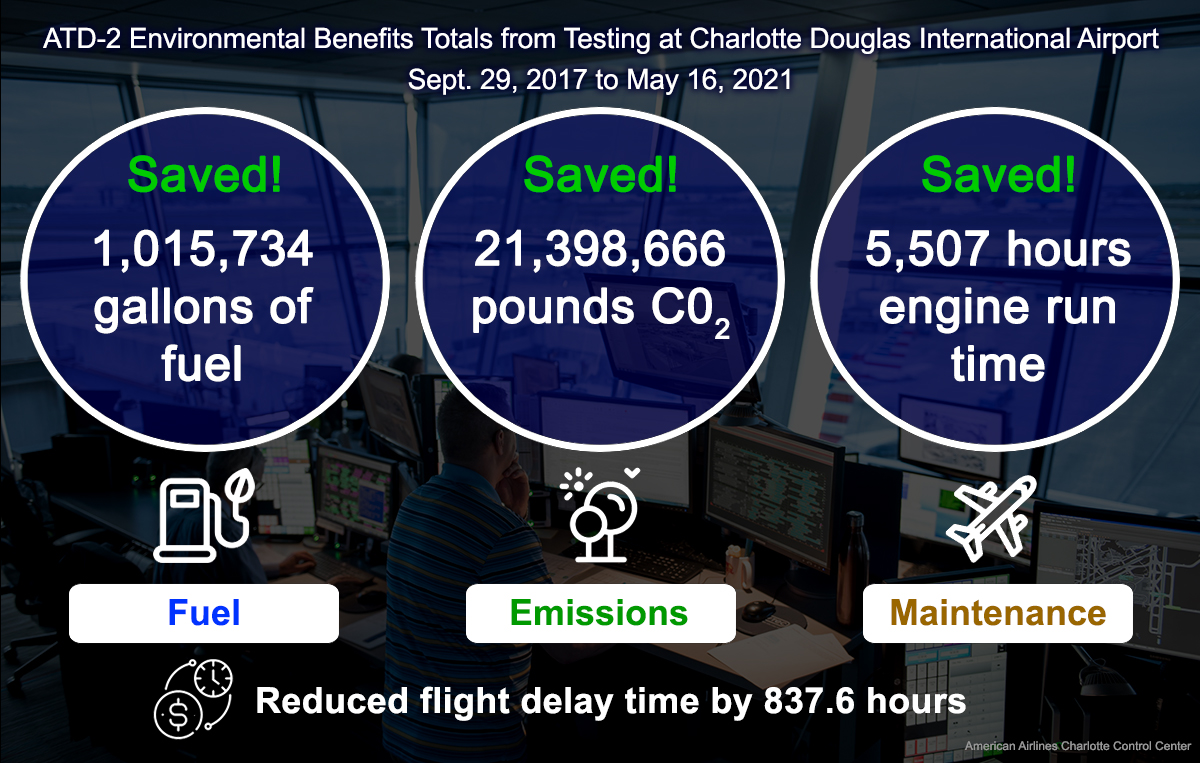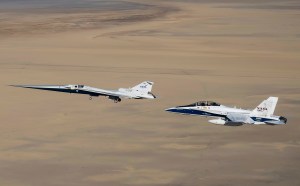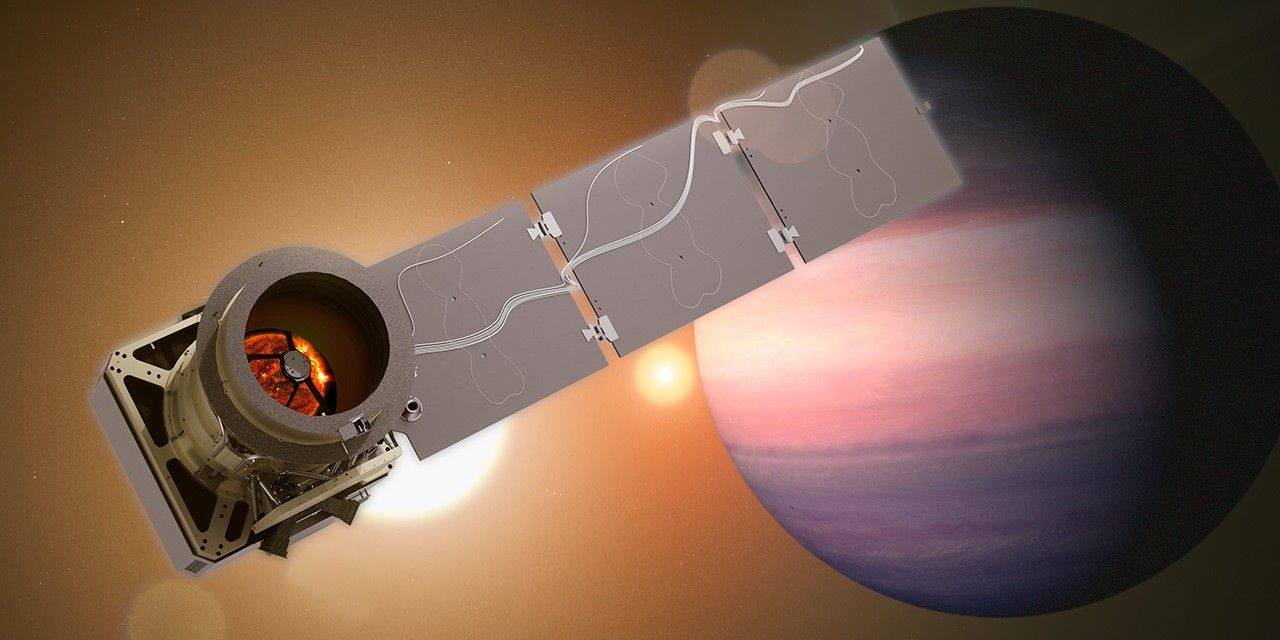Results of an ongoing demonstration of NASA-developed air traffic scheduling technology at Charlotte-Douglas International Airport in North Carolina surpassed a notable milestone on May 16. Since testing of the technology began in September 2017, participating airlines at Charlotte have saved more than one million gallons of jet fuel – 1,015,734 gallons to be precise.
Known as Airspace Technology Demonstration-2, or ATD-2 – the research focus is on enabling the coordination of schedules among those who manage the movement of aircraft from an airport gate to a spot in the sky after takeoff where they can safely join with the overhead traffic – like a car merging onto a freeway. The idea is for an airliner to make the trip from gate to runway to cruising altitude without stopping.
It’s that more precise scheduling and more efficient ground operations that enables the fuel savings, which also translates into other economic and environmental benefits. In addition to the million gallons saved so far, researchers during the demonstration have:
- Prevented the release of 21,398,666 pounds of carbon dioxide into the atmosphere, which is the equivalent of planting 159,119 trees in an urban environment.
- Reduced flight delay time by 837.6 hours.
- Cut 5,527 hours of jet engine run time, which extends an engine’s overall lifetime and decreases maintenance costs.
- Saved passengers an estimated $4 million in value of time and airlines an estimated $1.2 million in flight crew costs.
“These are impressive numbers, but still only a drop in the bucket of what’s possible in the future as this technology is embraced by the aviation community and put in practice at airports around the nation,” said Shawn Engelland, NASA’s ATD project manager.
The demonstration will continue at Charlotte and has already expanded to include airports in North Texas and air traffic flying over regions of the U.S. southeast. At the same time, the Federal Aviation Administration is already studying the technology NASA has provided and has plans to initially roll it out to 27 major airports in the coming years.



































